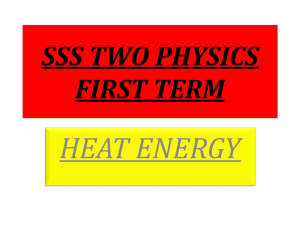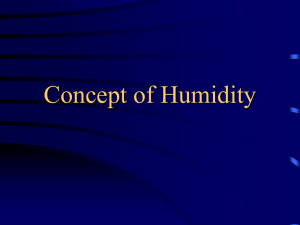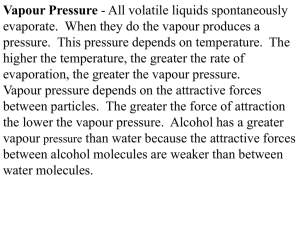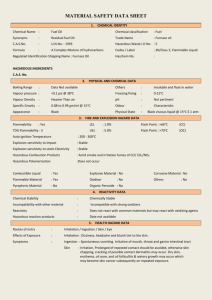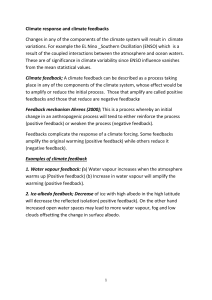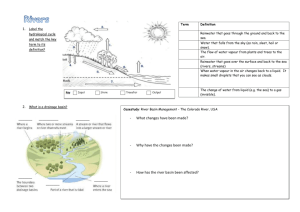Humidity Worksheet: Science 10 Weather Concepts
advertisement
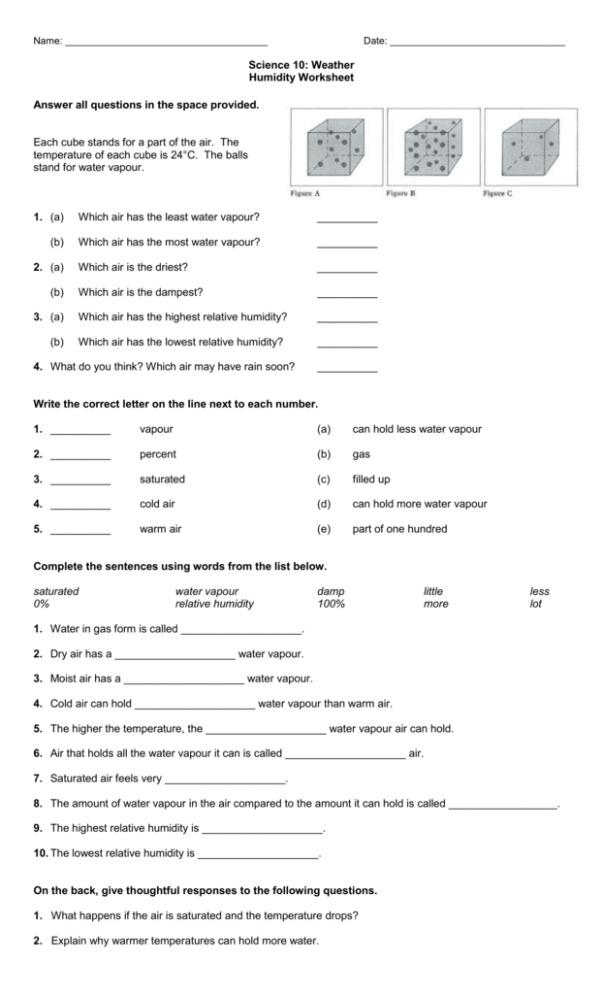
Name: _____________________________________ Date: ________________________________ Science 10: Weather Humidity Worksheet Answer all questions in the space provided. Each cube stands for a part of the air. The temperature of each cube is 24°C. The balls stand for water vapour. 1. (a) Which air has the least water vapour? __________ (b) Which air has the most water vapour? __________ Which air is the driest? __________ Which air is the dampest? __________ Which air has the highest relative humidity? __________ Which air has the lowest relative humidity? __________ 2. (a) (b) 3. (a) (b) 4. What do you think? Which air may have rain soon? __________ Write the correct letter on the line next to each number. 1. __________ vapour (a) can hold less water vapour 2. __________ percent (b) gas 3. __________ saturated (c) filled up 4. __________ cold air (d) can hold more water vapour 5. __________ warm air (e) part of one hundred Complete the sentences using words from the list below. saturated 0% water vapour relative humidity damp 100% little more less lot 1. Water in gas form is called ____________________. 2. Dry air has a ____________________ water vapour. 3. Moist air has a ____________________ water vapour. 4. Cold air can hold ____________________ water vapour than warm air. 5. The higher the temperature, the ____________________ water vapour air can hold. 6. Air that holds all the water vapour it can is called ____________________ air. 7. Saturated air feels very ____________________. 8. The amount of water vapour in the air compared to the amount it can hold is called __________________. 9. The highest relative humidity is ____________________. 10. The lowest relative humidity is ____________________. On the back, give thoughtful responses to the following questions. 1. What happens if the air is saturated and the temperature drops? 2. Explain why warmer temperatures can hold more water. Name: _____________________________________ Date: ________________________________ Science 10: Weather Humidity Worksheet Answers 1. (a) Which air has the least water vapour? C (b) Which air has the most water vapour? B Which air is the driest? C Which air is the dampest? B Which air has the highest relative humidity? B Which air has the lowest relative humidity? C 2. (a) (b) 3. (a) (b) 4. What do you think? Which air may have rain soon? B Write the correct letter on the line next to each number. 1. B vapour (a) can hold less water vapour 2. E percent (b) gas 3. C saturated (c) filled up 4. A cold air (d) can hold more water vapour 5. D warm air (e) part of one hundred Complete the sentences using words from the list below. saturated 0% water vapour relative humidity damp 100% little more less lot 1. Water in gas form is called water vapour. 2. Dry air has a little water vapour. 3. Moist air has a lot water vapour. 4. Cold air can hold less water vapour than warm air. 5. The higher the temperature, the more water vapour air can hold. 6. Air that holds all the water vapour it can is called saturated air. 7. Saturated air feels very damp. 8. The amount of water vapour in the air compared to the amount it can hold is called relative humidity. 9. The highest relative humidity is 100%. 10. The lowest relative humidity is 0%. On the back, give thoughtful responses to the following questions. 1. What happens if the air is saturated and the temperature drops? Cold air cannot hold as much water. The water vapour in the air will condense to clouds, fog, mist, or rain. 2. Explain why warmer temperatures can hold more water. The particles in warmer air move faster and have more space between them. There is more room for water vapour to fill.
